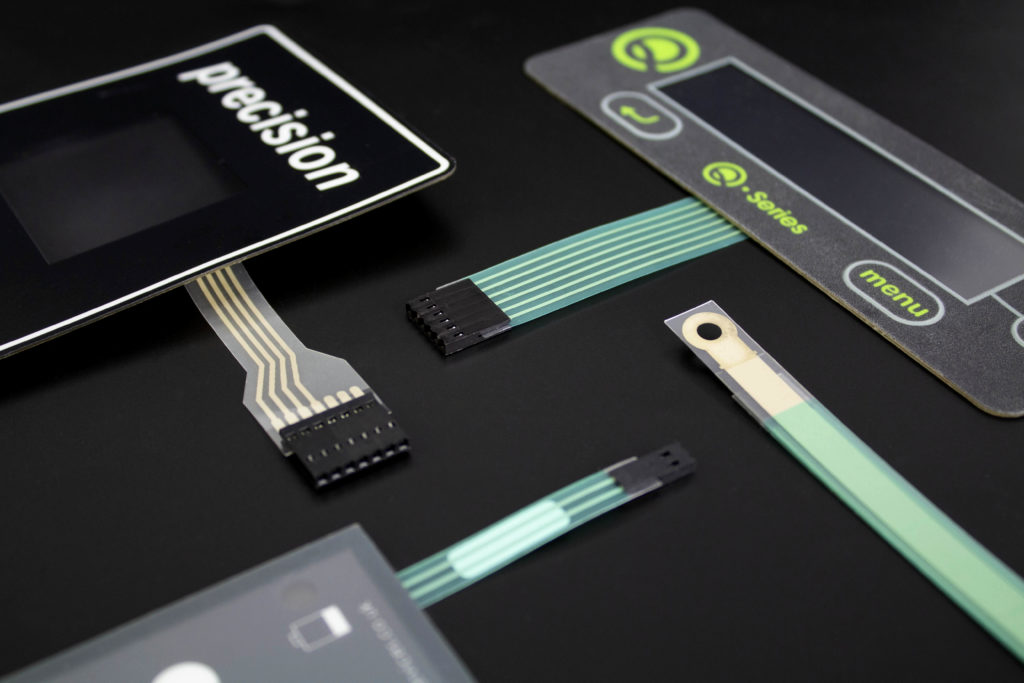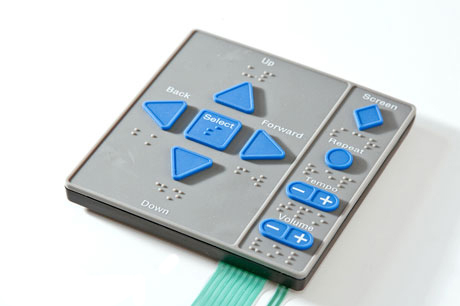Top Applications for Membrane Switches in Consumer Electronics
Top Applications for Membrane Switches in Consumer Electronics
Blog Article
Discover Just How Membrane Switches Function and Their Function in Modern Electronics
Membrane Switches stand for an innovative combination of technology and layout within the realm of modern-day electronic devices, offering as crucial interfaces in many gadgets. Consisted of numerous layers, these switches use pressure-sensitive systems to promote customer communication. Their applications cover various markets, from consumer electronic devices to medical devices, highlighting their convenience and importance. Recognizing the ins and outs of Membrane switch performance and their wider ramifications in boosting user experience invites more exploration into their layout, benefits, and the innovative advancements shaping their future in technology.
What Are Membrane Buttons?

Membrane switches are identified by their resilience and resistance to ecological aspects, such as dust, dampness, and severe temperatures. They can be tailored with various graphics, shades, and tactile feedback choices, boosting user experience while preserving aesthetic allure - membrane switches. Furthermore, the incorporation of printed circuits permits for seamless integration right into gadgets, improving total functionality.
The convenience of Membrane buttons appears in their capacity to support both complex and easy control functions. They can incorporate functions such as LED signs and touch-sensitive innovation, catering to specific individual needs. As technology proceeds to advance, Membrane Switches remain important for making it possible for efficient and instinctive user interfaces, consequently playing a pivotal function in the innovation of modern-day electronic gadgets.
Components of Membrane Buttons
Membrane buttons are composed of a number of key parts that collaborate to create a practical and dependable user interface. The key elements include the graphic overlay, sticky layer, spacer layer, and conductive traces.
The graphic overlay serves as the individual interface, typically printed on an adaptable substrate such as polyester or polycarbonate. This layer not only offers visual charm yet additionally consists of responsive feedback, aesthetic signs, and safety functions. Beneath the visuals overlay exists the sticky layer, which safeguards the button to the tool and guarantees longevity against environmental anxieties.
The spacer layer is vital for maintaining the necessary gap in between the visuals overlay and the circuit layer. This space enables the activation of the button when pressure is applied. The conductive traces, normally made from silver or carbon, form the electrical paths that complete the circuit when the button is engaged.
Additionally, a support layer might be included for structural assistance and insulation. These parts work together effortlessly, ensuring that Membrane buttons are both straightforward and durable, making them vital in numerous modern-day digital applications.
How Membrane Switches Work
Just how do Membrane Switches feature successfully within digital he has a good point tools? Membrane Switches operate on the concepts of pressure-sensitive modern technology, making use of a split construction that includes graphic overlays, adhesive layers, and conductive aspects.
The style of Membrane buttons is crucial for their reliable procedure (membrane switches). The layers are diligently crafted to offer responsive feedback, sturdiness, and resistance to ecological elements such as dampness and dust. The addition of domes-- small, elevated locations within the button-- improves tactile feedback, giving users with an obvious click feeling upon activation
Additionally, Membrane switches can be personalized in see page terms of size, form, and graphics, making them suitable for different applications. They are frequently utilized in control panels, clinical tools, and customer electronic devices as a result of their smooth layout and dependability. Generally, the reliable performance of Membrane switches is critical in improving individual communication and making sure smooth procedure in contemporary electronic devices.

Applications in Modern Gadgets
Utilizing their distinct style and functionality, Membrane switches have ended up being integral elements in a wide range of modern digital tools. These flexible interfaces are used in consumer electronic devices, industrial devices, medical devices, and automotive controls, giving seamless individual communication.
In consumer electronic devices, Membrane buttons are commonly discovered in appliances like microwaves, washing makers, and various other family devices, where they allow intuitive control with a sleek profile. Their low-profile style helps with combination right into small tools, boosting visual allure without compromising performance.
In commercial applications, Membrane Switches function as control board for machinery, offering toughness and resistance to extreme atmospheres. Their ability to stand up to moisture and impurities makes them ideal for use in manufacturing and processing sectors.
Medical devices likewise gain from Membrane buttons, which are made to be easy to tidy and maintain, making sure health in why not try this out medical setups. They are commonly used in diagnostic tools, individual surveillance systems, and portable clinical devices, where integrity is critical.
Advantages of Membrane Buttons
Among the key advantages of Membrane buttons is their adaptability, which allows them to be customized for a selection of applications throughout several sectors. These switches can be developed in numerous shapes and dimensions, fitting one-of-a-kind product needs while giving seamless assimilation right into gadgets. Their thin account allows a smooth and compact design, usually improving the visual appeal of electronic items.
Another significant benefit is their toughness - membrane switches. Membrane buttons are typically immune to dirt, moisture, and chemicals, making them ideal for extreme environments. This durability prolongs their life expectancy compared to standard mechanical switches, minimizing the need for constant substitutes
In addition, Membrane Switches deal cost-effectiveness. The production procedure involves printing innovations that lessen manufacturing prices, especially for big runs. This cost, integrated with reduced maintenance demands, makes them an attractive choice for producers.

Conclusion
In conclusion, Membrane Switches represent a substantial innovation in user interface innovation within modern-day electronic devices. As the need for instinctive and resilient interfaces proceeds to expand, the function of Membrane buttons in shaping customer experience will most certainly broaden.
Membrane Switches represent an advanced integration of technology and layout within the realm of contemporary electronics, offering as crucial user interfaces in various tools.In the realm of modern-day electronics, Membrane Switches offer as vital elements that facilitate customer interaction with gadgets. As modern technology proceeds to advance, Membrane Switches continue to be vital for enabling instinctive and reliable individual interfaces, thus playing a crucial role in the development of contemporary digital devices.
How do Membrane Switches feature efficiently within digital gadgets? Generally, the efficient performance of Membrane switches is crucial in improving individual communication and guaranteeing seamless operation in contemporary digital devices.
Report this page